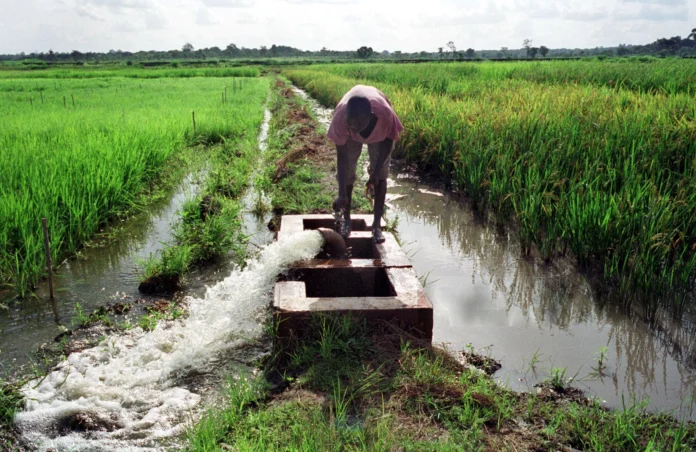Arabfields, Kazakhstan — In the vast, windswept plains of Kazakhstan’s Pavlodar region, where agriculture forms the backbone of rural life, an unexpected early October blizzard has delivered a harsh blow to farmers already grappling with unpredictable weather patterns. What began as a season of promise has turned into one of despair, as heavy snowfall and ice blanketed unharvested fields, freezing crops in place and threatening the livelihoods of dozens of families. This calamity, striking just as farmers were racing to complete delayed harvests amid persistent autumn rains, underscores the growing fragility of farming in a region increasingly at the mercy of erratic climate conditions.
The storm, which hit around October 11, dumped significant snow across northern Kazakhstan, including Pavlodar, transforming fertile fields into frozen wastelands. Roads iced over, complicating transportation and adding to the chaos. According to local accounts, the snowfall came unusually early, catching many off guard after a wet September that had already pushed back harvesting schedules. Farmers reported working at a pace of about 25,000 to 27,000 hectares per day in late September, hoping to wrap up by early October, but the rains slowed progress, leaving crops vulnerable. Now, with snow covering the ground, over 1,000 hectares of potatoes and 600 hectares of carrots lie ruined across roughly 20 farms. These root vegetables, staples in Kazakh cuisine and key exports, are particularly susceptible to frost damage, rendering much of the yield unsalvageable.
For individuals like Ramazan Kaliev, a seasoned farmer managing 320 hectares, the losses are not just financial but profoundly personal. Kaliev watched helplessly as a third of his crops succumbed to the freeze, estimating damages at around 450 million tenge, equivalent to approximately 950,000 dollars. “We have invested so much work, so many investments, I don’t know how to work anymore,” he said, his words capturing the exhaustion and uncertainty rippling through the community. Like many, Kaliev had taken out loans to purchase modern equipment, seeds, and fertilizers, expecting a bountiful season to cover repayments. Without produce to sell, he and his peers face mounting debt pressures, with banks demanding payments amid dwindling cash flows. Families who rely on these farms for income are now contemplating difficult choices, from selling assets to seeking alternative employment in urban areas, further straining rural economies.
Regional authorities have downplayed the broader economic fallout, noting that the affected areas represent only about 3 percent of Pavlodar’s total potato plantations. They assure that market supplies remain stable, with no immediate shortages anticipated for consumers in cities like Astana or Almaty. Yet, this macro-level perspective offers scant solace to those on the ground. The real crisis lies not in aggregate statistics but in the human toll: disrupted lives, eroded confidence in farming as a viable profession, and the potential for long-term depopulation in agricultural heartlands. Neighboring regions, such as those in Russia like Omsk, have faced similar woes, with early snow prompting emergency declarations and highlighting a regional pattern of weather extremes.
At the heart of this ordeal is a glaring gap in support systems designed to shield farmers from such shocks. The Kazakh government has ruled the incident ineligible for public compensation, adhering to protocols that activate emergency aid primarily for droughts or floods, common in the country’s arid and flood-prone zones. Unusual snowfall, despite its destructive force, falls outside these narrow criteria, leaving victims without direct relief. Instead, officials have suggested loan restructuring as a workaround, allowing farmers to extend repayment terms. However, this option often comes with pitfalls, including higher interest rates and restrictions on accessing fresh credit for the next planting season. What begins as a temporary fix can evolve into a cycle of debt, discouraging investment in resilience measures and perpetuating vulnerability.
This event in Pavlodar is emblematic of wider challenges facing agriculture in continental climates, where temperature swings and precipitation anomalies are becoming more frequent. In Kazakhstan, a nation heavily dependent on grain, livestock, and vegetable production, such volatility threatens not only individual farms but national food security. Warmer winters with reduced snowpack, followed by sudden cold snaps or heavy rains, disrupt planting and harvesting cycles. For instance, while the 2025 harvest season is nearing completion with potentially record yields in some areas, localized disasters like this reveal uneven impacts. Southern and western regions brace for droughts in the coming summer, with forecasts predicting hot, dry conditions that could slash yields of wheat, cotton, and melons by up to 40 percent. These patterns exacerbate water scarcity, soil erosion, and pest outbreaks, compounding risks for a sector that employs a significant portion of the population.
Globally, the intensification of climate-related hazards poses a mounting threat to food systems, particularly in landlocked, arid nations like Kazakhstan. Rising temperatures alter precipitation regimes, leading to more intense storms, prolonged wet periods, and unseasonal frosts that damage crops at critical growth stages. In Central Asia, where agriculture accounts for a substantial share of GDP and employment, these shifts could undermine efforts to achieve self-sufficiency in staples. The volatility affects not just production but distribution, with damaged infrastructure delaying transport and inflating prices. For vulnerable households, this translates to reduced access to nutritious food, heightening malnutrition risks in a region already navigating post-pandemic recovery and geopolitical tensions.
Experts emphasize that building resilience requires a multifaceted strategy, blending on-farm innovations with stronger institutional frameworks. Agronomic adaptations, such as adopting crop varieties that mature earlier or tolerate frost, can help mitigate immediate risks. Enhanced weather forecasting, leveraging satellite data and local monitoring, enables farmers to time harvests more effectively. Irrigation improvements and soil management practices, like cover cropping to retain moisture, address longer-term vulnerabilities. Yet, these measures alone are insufficient without financial backstops. Comprehensive crop insurance programs, tailored to cover a spectrum of climate perils beyond traditional droughts and floods, are essential. Governments must expand emergency protocols to include emerging threats like early snowfalls or extreme temperature fluctuations, ensuring swift aid distribution.
Moreover, international collaboration could amplify these efforts. Sharing best practices from regions with similar climates, such as parts of Siberia or the Canadian prairies, might inform policy. Investments in research for climate-resilient seeds and sustainable farming techniques could yield dividends, fostering a more adaptive agricultural sector. In Kazakhstan, where vast steppes hold immense potential, prioritizing these reforms could transform challenges into opportunities, bolstering exports and rural prosperity.
The Pavlodar snowfall serves as a stark reminder that agriculture’s future hinges on more than soil and seeds; it depends on robust safeguards for those who till the land. As farmers like Kaliev pick up the pieces, the incident calls for urgent action to fortify systems against an unpredictable climate. Without it, isolated tragedies risk becoming the norm, jeopardizing food security and the vitality of rural communities across Kazakhstan and beyond.












